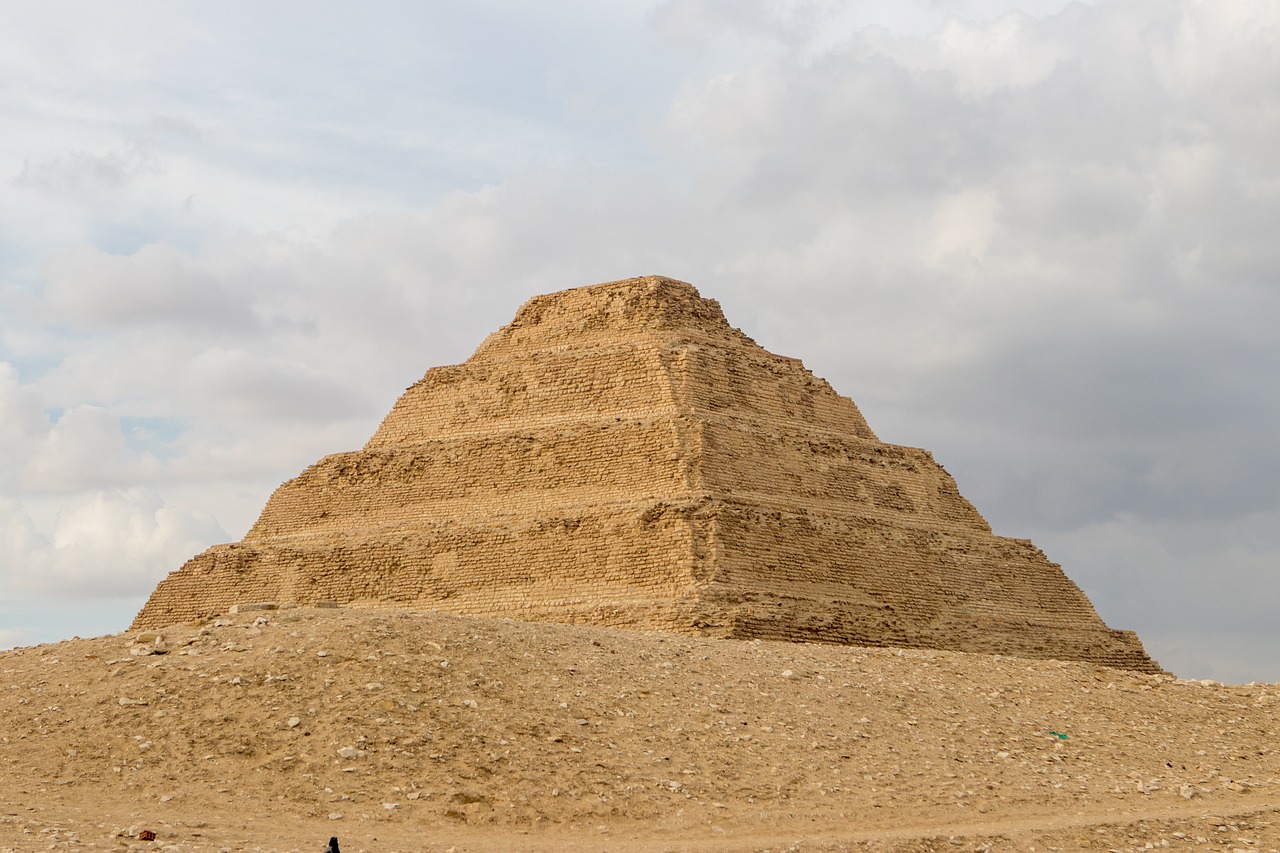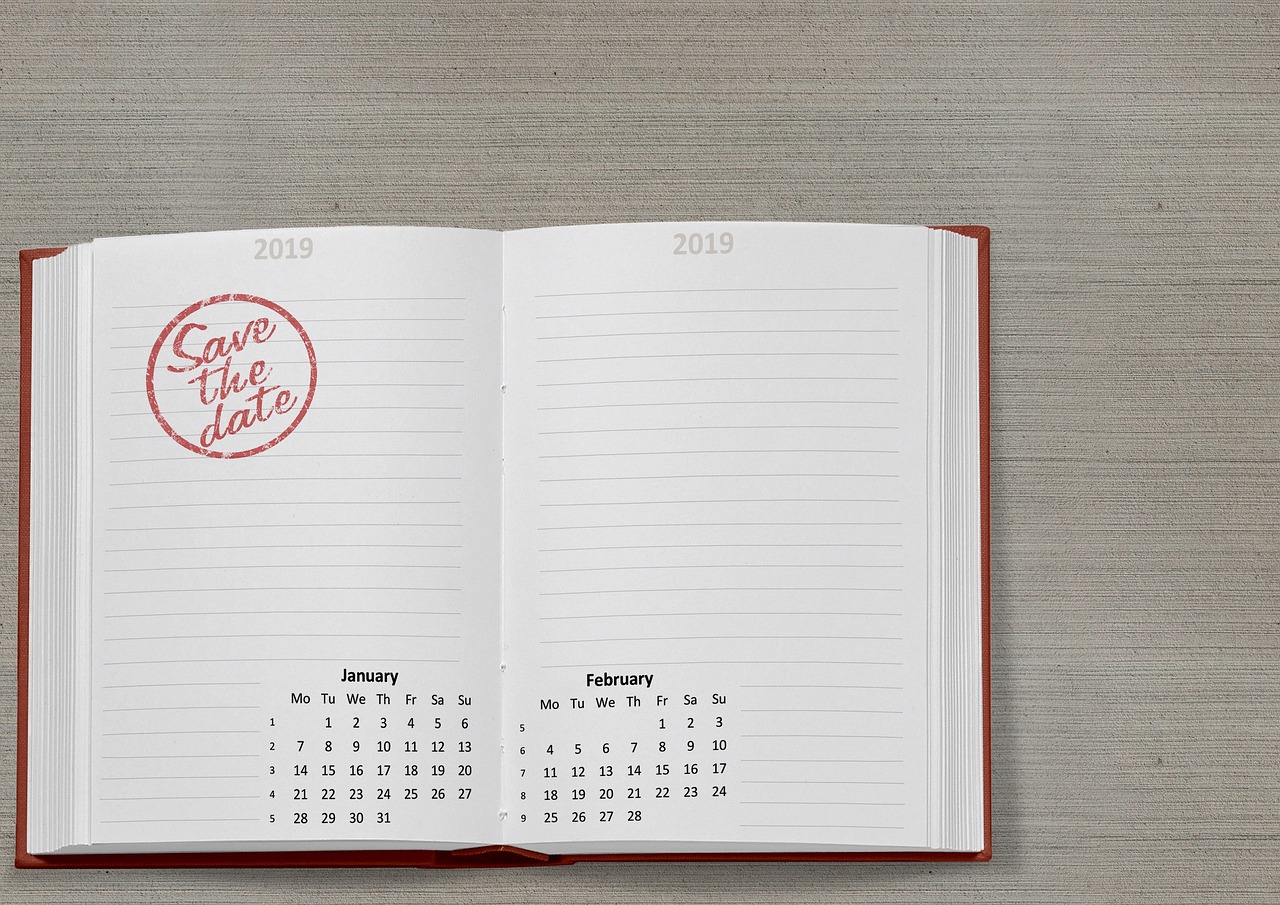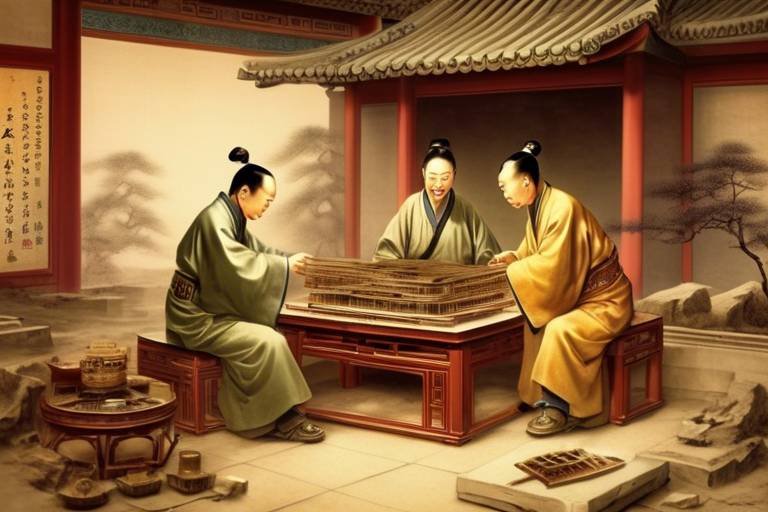The Secrets of the Ancient Egyptian Calendar
Origins of the Egyptian Calendar: The ancient Egyptian calendar holds a fascinating history that dates back to the early civilization of Egypt. It was intricately intertwined with the daily life and religious practices of the ancient Egyptians. The calendar system evolved over centuries, reflecting the cultural, agricultural, and astronomical influences that shaped Egyptian society.
Astronomical Alignments: One of the most intriguing aspects of the Egyptian calendar is its close connection to the stars and celestial bodies. Ancient Egyptians were keen astronomers, and their observations of the night sky greatly influenced the structure of the calendar. Alignments with key astronomical events guided the timing of festivals, religious ceremonies, and agricultural activities.
Calendar Structure and Divisions: The Egyptian calendar was a complex system that incorporated both solar and lunar cycles. It consisted of 12 months, each divided into 30 days, with an additional five intercalary days at the end of the year. Festivals and religious observances were intricately woven into the calendar, marking important occasions throughout the year.
Role of the Pharaohs: The pharaohs played a pivotal role in the regulation and maintenance of the Egyptian calendar. As divine rulers believed to have a direct connection to the gods, the pharaohs used the calendar for governance, religious ceremonies, and to assert their authority over the people.
Seasonal Festivals and Rituals: The Egyptian calendar was closely tied to the seasonal cycles of the Nile River, which played a crucial role in the agricultural prosperity of the region. Seasonal festivals and religious rituals celebrated the changing seasons, honoring deities associated with fertility, harvest, and rebirth.
Agricultural Significance: Agriculture was the lifeblood of ancient Egyptian society, and the calendar played a vital role in guiding farming practices. The annual flooding of the Nile River marked the beginning of the agricultural year, with planting and harvesting activities aligned with the calendar's cycles.
Astrological Influences: Astrology held a significant place in Egyptian culture, and the calendar incorporated astrological influences in its timekeeping system. Zodiac signs and celestial events were integrated into the calendar, shaping beliefs about fate, personality traits, and the auspicious times for various activities.
Legacy and Modern Influence: Despite the passage of millennia, the legacy of the Egyptian calendar endures in modern timekeeping systems. Elements of the ancient calendar, such as the 12-month division and the concept of intercalary days, continue to influence how we track time today.
Deciphering Timekeeping Mysteries: The enigmatic aspects of the Egyptian calendar continue to intrigue scholars and researchers. Ongoing efforts to decode its complexities offer new insights into the ancient Egyptians' sophisticated timekeeping practices, shedding light on their advanced knowledge of astronomy and mathematics.

Origins of the Egyptian Calendar
The ancient Egyptian calendar has its origins deeply rooted in the civilization's rich history and cultural practices. Dating back to around 3000 BCE, the Egyptian calendar was a complex system that played a fundamental role in the daily life and religious beliefs of the ancient Egyptians. It was intricately connected to the agricultural cycles of the Nile River, the celestial movements observed in the sky, and the religious ceremonies that marked significant events throughout the year.
One of the earliest known forms of the Egyptian calendar was based on a lunar system, with months determined by the cycles of the moon. Over time, the calendar evolved to incorporate a solar component, aligning more closely with the movements of the sun. This integration of lunar and solar elements demonstrated the Egyptians' keen understanding of astronomical phenomena and their ability to adapt their calendar to reflect the changing seasons and celestial events.
The development of the Egyptian calendar was not only a practical tool for timekeeping but also held profound religious significance. The alignment of the calendar with key celestial events, such as the annual flooding of the Nile, the heliacal rising of certain stars, and the solstices, underscored the Egyptians' belief in the interconnectedness of the earthly and divine realms. The calendar served as a guide for religious rituals, temple ceremonies, and the timing of important festivals dedicated to various deities.
Moreover, the Egyptian calendar was intricately tied to the concept of Ma'at, the ancient Egyptian principle of cosmic order and harmony. By organizing time according to celestial observations and agricultural cycles, the calendar reinforced the idea of balance and stability in the universe. The Egyptians believed that maintaining order in their calendar was essential for ensuring the prosperity and well-being of their society.
As the Egyptian civilization flourished and expanded, so too did the complexity of their calendar system. The calendar underwent revisions and refinements over the centuries, with priests, astronomers, and scribes working together to ensure its accuracy and alignment with the natural world. The enduring legacy of the Egyptian calendar reflects not only the ingenuity of its creators but also the enduring influence of ancient Egyptian culture on the development of human civilization.

Astronomical Alignments
The ancient Egyptian calendar was intricately intertwined with celestial phenomena, with astronomical alignments playing a crucial role in its development and structure. The Egyptians were keen observers of the skies, drawing connections between the movements of celestial bodies and the passage of time on Earth. These astronomical observations were not merely scientific curiosities but held profound significance in the religious and cultural fabric of ancient Egyptian society.
One of the key astronomical alignments in the Egyptian calendar was the synchronization of the solar year with the annual flooding of the Nile River. This alignment was essential for predicting the inundation of the Nile, which was crucial for the agricultural prosperity of the region. By closely monitoring the movements of the sun and stars, the Egyptians were able to establish a calendar that accurately reflected the cyclical nature of the natural world.
Moreover, the alignment of certain celestial events with religious festivals and rituals was a common practice in ancient Egypt. For example, the heliacal rising of the star Sirius, known as the 'Sothis' period, marked the beginning of the Egyptian New Year and was linked to the goddess Isis. This celestial alignment not only signified the onset of a new agricultural season but also held deep religious symbolism for the ancient Egyptians.
The Egyptian calendar also incorporated lunar alignments, with the phases of the moon guiding the timing of religious ceremonies and festivals. The lunar calendar, consisting of 12 months of 30 days each, was synchronized with the solar calendar to create a more comprehensive timekeeping system. This harmonization of solar and lunar cycles allowed the Egyptians to track time accurately and organize their societal activities in alignment with celestial rhythms.
In essence, the astronomical alignments embedded within the Egyptian calendar served as a bridge between the earthly realm and the celestial sphere, connecting the daily lives of the ancient Egyptians with the grandeur of the cosmos. By honoring and interpreting these celestial connections, the Egyptians not only structured their calendar but also imbued it with a sense of cosmic order and divine harmony.

Calendar Structure and Divisions
The Egyptian calendar is a fascinating system that was intricately structured to align with both solar and lunar cycles, reflecting the ancient Egyptians' deep understanding of celestial movements and their significance in daily life. This calendar, known for its precision and complexity, consisted of 12 months divided into three seasons based on the Nile River's annual flooding. Each month was comprised of 30 days, further divided into three weeks of 10 days each, with an additional five epagomenal days at the end of the year.
One of the most distinctive features of the Egyptian calendar was its dual nature, incorporating both solar and lunar elements. The solar calendar, known as the Sothic calendar, was based on the heliacal rising of the star Sirius, which signaled the beginning of the new year. This alignment with the star's appearance ensured the synchronization of the calendar with the solar year, vital for agricultural planning and religious observances.
In addition to the solar calendar, the ancient Egyptians also utilized a lunar calendar that was based on the cycles of the moon. This lunar calendar consisted of 12 months of 29 or 30 days, depending on the moon's phases, resulting in a 354-day year. To reconcile the discrepancies between the solar and lunar calendars, the Egyptians employed intercalary months and days to maintain harmony with the seasons and astronomical events.
The Egyptian calendar's divisions extended beyond the basic structure of months and weeks, encompassing a complex system of festivals and religious observances that punctuated the year. These festivals were intricately tied to agricultural cycles, celestial events, and mythological narratives, serving as crucial markers for communal gatherings, offerings to deities, and propitiatory rituals to ensure prosperity and protection.
Moreover, the Egyptian calendar reflected the cyclical nature of time and the interconnectedness of the natural world, emphasizing the importance of harmony and balance in both temporal and spiritual realms. By adhering to the rhythms of the cosmos and the earth, the ancient Egyptians sought to maintain order and continuity in their lives, honoring the divine forces that governed existence.

Role of the Pharaohs
The role of the Pharaohs in the ancient Egyptian calendar was paramount, shaping not only the daily lives of the people but also the religious practices and governance of the civilization. As divine rulers believed to have a direct connection to the gods, the Pharaohs held the responsibility of overseeing the regulation and maintenance of the calendar, ensuring its accuracy and alignment with celestial events.
With the power to decree festivals, rituals, and important ceremonies based on the calendar's cycles, the Pharaohs utilized this timekeeping system to assert their authority and reinforce their divine status. The alignment of religious festivities with astronomical events served to emphasize the Pharaohs' role as intermediaries between the earthly realm and the celestial heavens.
Moreover, the Egyptian calendar played a crucial role in the agricultural planning of the kingdom, with the Pharaohs guiding farming activities and crop cycles according to the seasonal divisions marked by the calendar. By regulating planting and harvesting times, the Pharaohs ensured the prosperity and sustenance of their subjects, solidifying their position as both political and spiritual leaders.
Through their involvement in the Egyptian calendar, the Pharaohs demonstrated their control over time itself, symbolizing their authority over the natural world and the spiritual realm. The intricate interplay between celestial observations, religious practices, and governance underlined the central role of the Pharaohs in the ancient Egyptian civilization, shaping the cultural landscape and societal structure of the time.

Seasonal Festivals and Rituals
Seasonal festivals and rituals held great significance in the ancient Egyptian calendar, shaping the cultural and religious fabric of the civilization. These events were intricately linked to the cycles of nature, marking key moments in the agricultural calendar and celestial observations.
The Wepet Renpet, or the "Opening of the Year," was a prominent festival celebrated at the beginning of the agricultural season when the Nile River flooded, bringing fertile soil for planting. This festival symbolized rebirth and rejuvenation, aligning with the Egyptians' beliefs in renewal and regeneration.
During the Opet Festival, held in the second month of the lunar calendar, the pharaoh would lead a grand procession from the Karnak Temple to the Luxor Temple, honoring the gods Amun, Mut, and Khonsu. This festival emphasized the divine union of the Theban triad and the pharaoh's role as the intermediary between the gods and the people.
The Festival of Sokar was dedicated to the god Sokar, associated with the cycle of life, death, and rebirth. This festival involved elaborate processions, rituals, and performances to ensure the continuity of life and the eternal cycle of existence.
Another significant event was the Beautiful Feast of the Valley, a funerary festival honoring the deceased pharaohs and ancestors. This occasion included offerings, prayers, and processions to ensure the well-being of the spirits in the afterlife and maintain harmony between the living and the dead.
Throughout the year, the ancient Egyptians observed various rituals and ceremonies linked to the agricultural seasons, celestial events, and religious beliefs. These practices not only connected them to the natural world but also reinforced their cultural identity and spiritual connection to the divine.

Agricultural Significance
The agricultural significance of the ancient Egyptian calendar was paramount to the civilization's prosperity and survival. In a land where the fertile Nile River valley played a crucial role in sustaining life, the calendar served as a guiding force for agricultural practices and crop cycles. By aligning planting and harvesting schedules with the calendar's lunar and solar cycles, the ancient Egyptians maximized their agricultural output and ensured food security for their population.
The Egyptian calendar consisted of three seasons: Akhet (inundation), Peret (growth), and Shemu (harvest). Each season was marked by specific agricultural activities that were meticulously planned according to the calendar's divisions. The inundation season, Akhet, was a time of flooding when the Nile River overflowed its banks, depositing fertile silt that enriched the soil for planting. This natural phenomenon was eagerly anticipated as it signaled the beginning of the agricultural year.
During the growth season, Peret, farmers diligently cultivated their fields, sowing a variety of crops such as wheat, barley, and flax. The calendar guided them on the optimal times for planting and irrigation, ensuring bountiful harvests. Festivals and rituals tied to agricultural deities were also observed during this season to invoke blessings for a successful crop yield.
As the harvest season, Shemu, approached, the ancient Egyptians reaped the fruits of their labor, gathering the ripened crops for storage and consumption. The calendar's precise timing of harvest festivals and offerings to agricultural gods reflected the deep connection between farming activities and religious beliefs. The abundance of the harvest not only sustained the population but also played a significant role in the economy and trade of ancient Egypt.
The agricultural significance of the Egyptian calendar extended beyond mere farming practices; it was intertwined with the spiritual beliefs and cultural identity of the civilization. The cyclical nature of agricultural activities mirrored the eternal cycle of life, death, and rebirth, symbolizing the Egyptians' profound understanding of nature's rhythms and their place within the cosmic order.
Today, the legacy of the ancient Egyptian calendar's agricultural wisdom lives on in the practices of modern agriculture, where the principles of timing, seasonality, and sustainability continue to guide farmers in maximizing their yields and preserving the environment. By studying the agricultural significance of the Egyptian calendar, we gain not only a glimpse into the past but also valuable insights that can inform our approach to agriculture in the present and future.

Astrological Influences
Astrology played a significant role in shaping the ancient Egyptian calendar, intertwining celestial events with daily life and religious practices. The Egyptians believed that the movements of celestial bodies, such as the sun, moon, and stars, held profound influence over earthly events and human destinies. By observing the positions of these celestial entities, Egyptian priests and astronomers developed a complex system of timekeeping that integrated astrological principles.
One of the key astrological influences on the Egyptian calendar was the alignment of certain events with specific zodiac signs. The zodiac played a crucial role in determining auspicious times for various activities, such as planting crops, conducting religious ceremonies, or embarking on military campaigns. Each zodiac sign was associated with different qualities and characteristics that were believed to influence the outcome of endeavors undertaken during its corresponding time period.
Moreover, the Egyptians also incorporated the concept of astrological houses into their calendar system. These houses were divisions of the sky that corresponded to specific areas of life, such as health, wealth, and relationships. By aligning their activities with the movements of the celestial houses, the Egyptians sought to harness the cosmic energies believed to govern different aspects of human existence.
Furthermore, the Egyptian calendar integrated the phases of the moon into its timekeeping structure, recognizing the moon's influence on tides, agricultural cycles, and human behavior. The lunar calendar, consisting of 12 months of 30 days each, was synchronized with the solar calendar to create a comprehensive system that accounted for both celestial bodies' movements.
In essence, the astrological influences on the Egyptian calendar reflected the ancient Egyptians' profound connection to the cosmos and their belief in the interconnectedness of the celestial and terrestrial realms. By aligning their daily activities and religious rituals with the movements of the stars and planets, the Egyptians sought to harmonize their lives with the cosmic order and divine forces that governed the universe.
Q: How did the Egyptians use astrology in their calendar?
A: The Egyptians integrated astrology into their calendar by aligning events with specific zodiac signs and celestial houses, believing that the positions of celestial bodies influenced human affairs.
Q: What role did the moon play in the Egyptian calendar?
A: The phases of the moon were crucial in determining time divisions and agricultural activities in the Egyptian calendar, with lunar cycles guiding important societal events.
Q: How did the Egyptian calendar differ from modern calendars?
A: The Egyptian calendar was based on a combination of solar and lunar cycles, with astrological influences shaping its structure, unlike modern calendars that primarily follow solar patterns.
Q: What significance did zodiac signs hold in the Egyptian calendar?
A: Zodiac signs were associated with specific qualities and characteristics believed to influence the outcome of activities undertaken during their corresponding time periods, guiding the Egyptians in their daily endeavors.

Legacy and Modern Influence
The legacy of the ancient Egyptian calendar continues to exert a profound influence on modern timekeeping systems. Despite the passage of millennia, elements of this ancient calendar persist in contemporary society, shaping how we perceive and organize time.
One of the most enduring legacies of the Egyptian calendar is its influence on the modern calendar system. The concept of dividing the year into 12 months, each with approximately 30 days, can be traced back to the Egyptian calendar. This organizational structure laid the foundation for the development of the Gregorian calendar used globally today.
Furthermore, the Egyptian calendar's emphasis on astronomical observations and celestial events has left a lasting mark on astrology and horology. The integration of zodiac signs and celestial phenomena into the Egyptian calendar foreshadowed the astrological influences present in modern interpretations of time and space.
Moreover, the agricultural significance of the Egyptian calendar continues to resonate in modern farming practices. The guidance provided by the calendar in aligning planting and harvesting schedules with the cycles of the Nile River remains a testament to its enduring practicality and relevance.
As we unravel the mysteries of the ancient Egyptian calendar, we uncover a wealth of knowledge that transcends time and bridges the gap between past and present. The legacy of this ancient timekeeping system serves as a reminder of the ingenuity and sophistication of one of the world's oldest civilizations.

Deciphering Timekeeping Mysteries
The ancient Egyptian calendar has long been a subject of fascination and mystery, with its intricate system of timekeeping holding many secrets waiting to be unraveled. Deciphering the timekeeping mysteries of this ancient civilization involves delving deep into historical records, astronomical observations, and archaeological findings.
One of the most intriguing aspects of the Egyptian calendar is its unique combination of solar and lunar cycles, which played a crucial role in determining the dates of religious festivals, agricultural activities, and administrative matters. Researchers are continuously working to decode the complex interplay between these celestial movements and the cultural practices of the ancient Egyptians.
Through the meticulous study of ancient texts, such as the Cairo Calendar and the Book of Nut, scholars have been able to piece together fragments of information that shed light on the intricacies of the Egyptian calendar system. By analyzing the alignment of stars, the phases of the moon, and the movements of the sun, researchers aim to reconstruct the calendar's structure and functions.
Archaeoastronomy, a field that combines archaeology and astronomy, has been instrumental in deciphering the astronomical knowledge embedded in ancient Egyptian monuments and artifacts. By studying alignments of temples, tombs, and other structures with celestial events, researchers have gained valuable insights into how the Egyptians perceived time and the cosmos.
Moreover, the role of mathematics and geometry in the development of the Egyptian calendar cannot be overlooked. The precise calculations required to synchronize solar and lunar cycles, as well as the establishment of fixed points for timekeeping, demonstrate the advanced mathematical knowledge possessed by ancient Egyptian astronomers and priests.
As modern technology and research methods continue to advance, new discoveries and interpretations regarding the Egyptian calendar are constantly emerging. By collaborating across disciplines and utilizing cutting-edge tools, scholars are gradually piecing together the puzzle of ancient Egyptian timekeeping practices, bringing us closer to understanding this enigmatic system in its full complexity.
Frequently Asked Questions
- What is the significance of the Egyptian calendar?
The Egyptian calendar held immense significance in the daily life and religious practices of ancient Egyptian civilization. It was intricately tied to agricultural cycles, religious festivals, and governance, shaping the societal customs and beliefs of the time.
- How did astronomical observations influence the Egyptian calendar?
Astronomical alignments played a crucial role in shaping the structure of the Egyptian calendar. Observations of celestial events such as the heliacal rising of Sirius and the movements of the sun and moon guided the calendar's divisions and events.
- What role did the pharaohs play in the Egyptian calendar?
The pharaohs were deeply involved in regulating and maintaining the Egyptian calendar. They utilized it for governance, religious ceremonies, and to assert their divine authority, showcasing the calendar's importance in ancient Egyptian society.
- How did the Egyptian calendar influence agricultural practices?
The Egyptian calendar had a significant impact on agricultural practices, particularly in the fertile Nile River valley. It guided farming activities, crop cycles, and the timing of important agricultural events, demonstrating its crucial role in sustaining the civilization.
- What is the legacy of the Egyptian calendar in modern times?
The legacy of the Egyptian calendar persists in modern timekeeping systems and cultural practices. Elements of the calendar, such as the division of time into days, months, and years, continue to influence how we track time and organize our lives today.



















